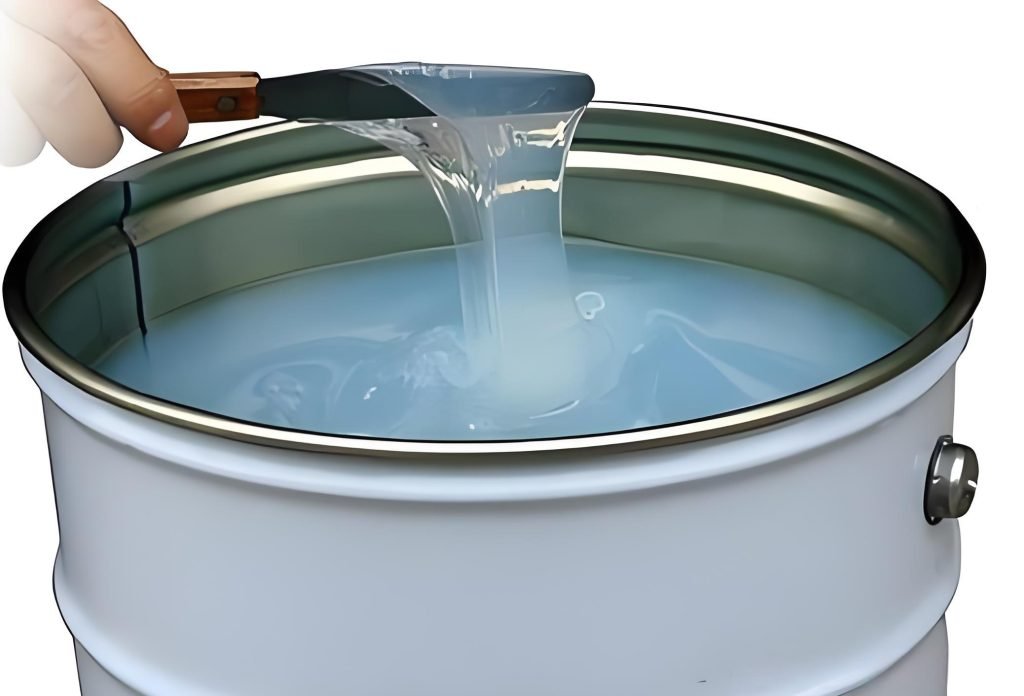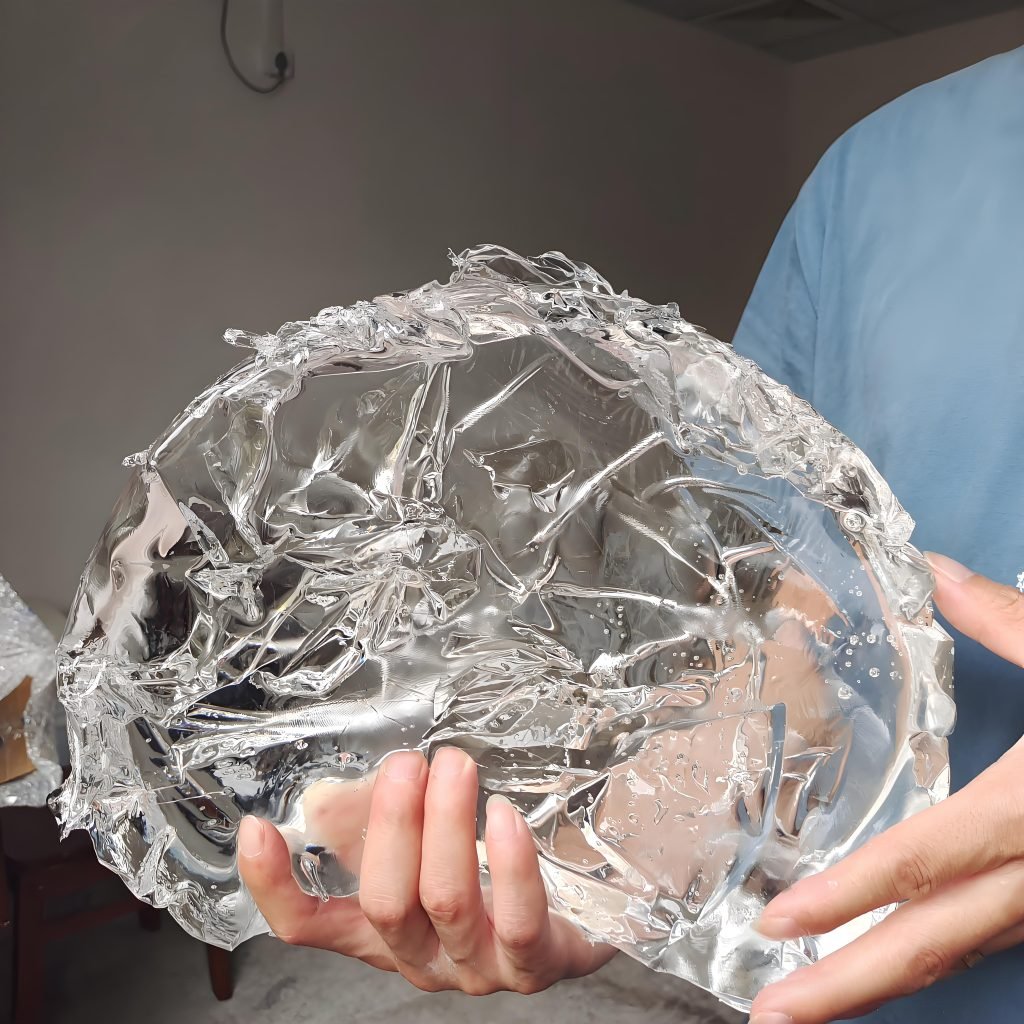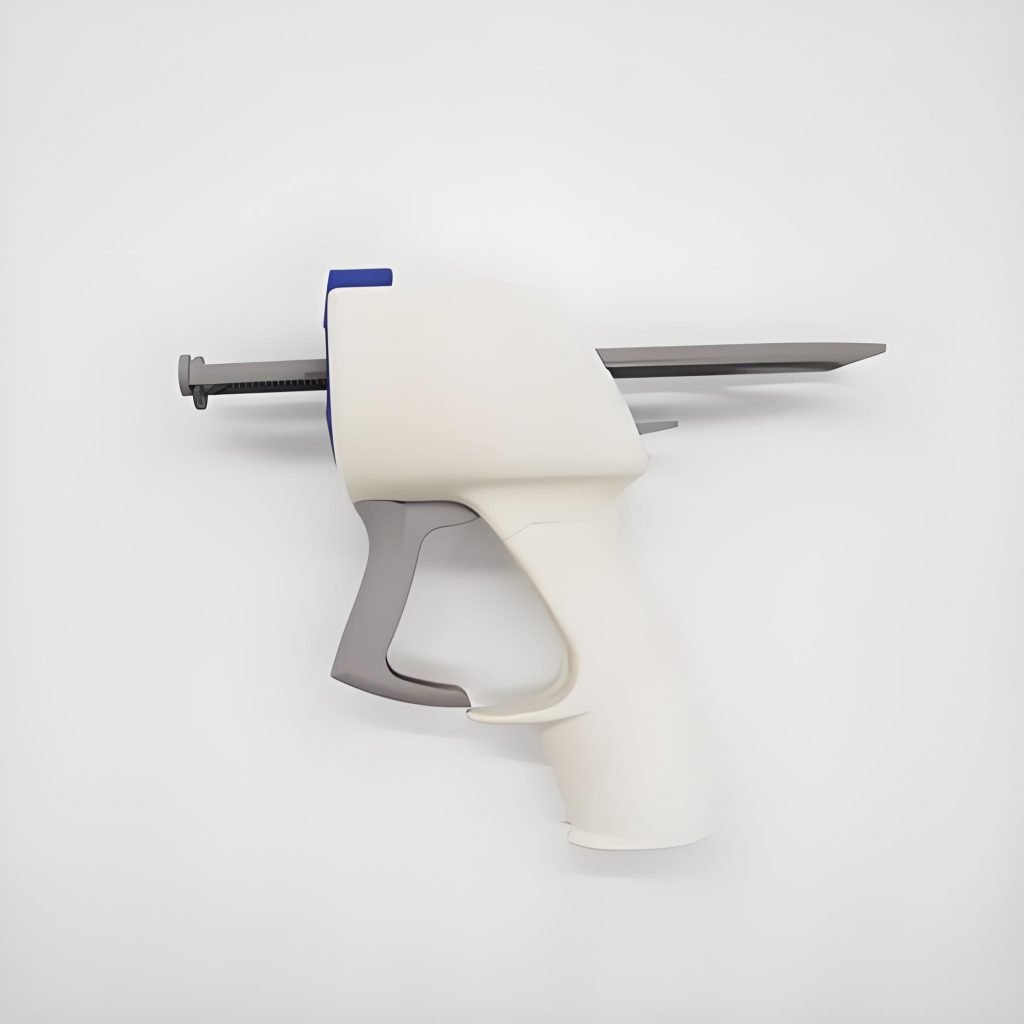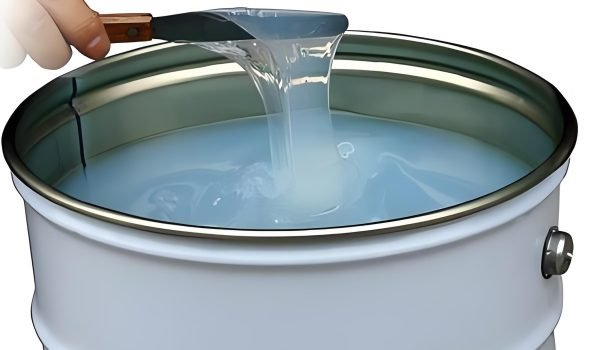Choosing between LSR (Liquid Silicone Rubber) and HCR (High Consistency Rubber) injection molding is a vital decision for manufacturers in medical and industrial sectors. Each method offers unique advantages tailored to specific applications in the medical and industrial sectors. LSR molding is known for its high-speed automation, superior clarity, and biocompatibility, making it ideal for medical devices and wearable technology.
In contrast, HCR molding, with its thicker consistency, excels in producing durable components that demand high tear resistance and strength, such as implantable parts. This guide explores the pros, cons, and use cases of each, providing a clear roadmap for selecting the best fit for your specific application.
Understanding Silicone in Injection Molding
Silicone has become a go-to material for both medical and industrial components because of its temperature stability, flexibility, chemical resistance, and biocompatibility. In injection molding, two primary types dominate:
- LSR (Liquid Silicone Rubber): A low viscosity, two component system for precision and automation.
- HCR (High Consistency Rubber): A high viscosity, solid state silicone that requires more manual processing but has unique benefits in mechanical durability.
Silicone polymers are made up of silicon-oxygen chains that provide resistance to extreme environments. The ability to mold these into complex shapes while maintaining physical integrity is what makes both LSR and HCR so valuable across industries.
What Is LSR Silicone?
Liquid Silicone Rubber (LSR) is a two-component silicone elastomer system known for its low viscosity and excellent flowability. LSR starts as a liquid material with much lower viscosity than its HCR counterpart. It measures between 200,000 and 800,000 centipoise—similar to honey’s consistency. LSR’s unique properties let it flow smoothly through complex mold cavities and create precise parts.

How LSR Injection Molding Works
LSR injection molding uses two liquid components: the base polymer and the catalyst, stored separately. A static mixer pumps and combines these components in exact ratios, usually 1:1. The mixed material then flows to a temperature controlled injection unit which pushes liquid silicone into a heated mold cavity.
The mold temperature is between 170°C and 230°C and triggers quick vulcanization. This process turns the liquid into a solid elastomer in 10 to 40 seconds. Such rapid curing makes LSR perfect for high volume production.
Advantages of LSR Silicone over traditional methods
LSR brings several key benefits compared to conventional molding techniques:
- Superior automation capability – Its liquid form allows complete automation that cuts labor costs and improves consistency
- Faster cycle times – Parts cure 5-10 times quicker than HCR options
- Lower volatile content – Minimal volatile organic compounds eliminate extensive post-curing in many cases
- Greater precision – Low viscosity helps produce complex shapes with tight tolerances (±0.001 inches)
Use in medical grade and high volume applications
Medical device manufacturing is increasingly using LSR because it’s biocompatible and meets strict regulatory requirements like USP Class VI and ISO 10993. LSR is essential in surgical instruments, respiratory masks, infant care products and implantable components.
The automotive, consumer electronics and industrial sectors also benefit from LSR’s consistent quality across millions of parts. Flash free molding reduces secondary operations making it ideal for high volume production environments.
What is HCR Silicone?
HCR silicone is made up of high molecular weight siloxane polymers that form a clay like material with excellent thermal stability. It’s also known as Heat-Cured Rubber or High Temperature Vulcanizing (HTV). This solid, gum-like elastomer gets its elastic mechanical properties after vulcanization. Unlike LSR, HCR keeps its shape before curing—a quality called “green strength”—which makes it highly moldable in its uncured state.
HCR silicone has excellent thermal resistance and performs well in temperatures from -50°C to +300°C. Plus, its molecular structure has very high weight macromolecules with straight chains, which gives excellent aging resistance once crosslinked. The material uses either peroxide systems or platinum catalysts, each with its own advantages for specific applications.

Common uses of HCR Injection Molding
We used HCR injection molding in applications that just need exceptional durability and mechanical strength. The process feeds HCR material into a heated barrel and injects it through a screw mechanism into a closed heated mold.
The material then vulcanizes at high temperatures. After this, manual or automatic demolding takes place, often followed by trimming and post-curing to remove acid powder deposits known as “blooming”.
Pros and cons of HCR Silicone
Pros:
- Great mechanical strength (strong, stretchy, and durable)
- Better resistance to permanent deformation than LSR (liquid silicone rubber)
- Cheaper raw material and equipment than LSR
Cons:
- Needs more manual work during production
- Peroxide-cured HCR needs extra curing to remove leftovers
- May show some strain under heat at first but stabilizes over time
Applications in medical grade silicone and industrial products
HCR silicone works in various medical applications. It meets FDA, ISO 10993 and USP Class VI standards for medical grade materials. It’s used for implantable shunts, pacemaker lead coverings, pump diaphragms and catheters.
The material is also used in industrial applications like automotive cable insulation, gaskets for combustion engines, sealing components and electrical insulators. These applications benefit from HCR’s excellent resistance to chemicals, UV exposure and environmental stress.
Key Differences Between LSR and HCR Injection Molding
The production efficiency and product quality in injection molding depend on four key areas that distinguish LSR from HCR. These differences help manufacturers pick the right approach that works best for their needs.
Processing Methods
LSR injection molding uses platinum-based curing systems that create minimal byproducts. This eliminates the need for extensive post-curing. HCR silicone cures with peroxide, leaving behind acidic residues. These residues need post-baking to stop “blooming” on part surfaces. LSR processing works with fully automated workflows. Due to its higher viscosity, HCR requires more manual intervention during production.
Mold Design and Cycle Times
HCR tooling is cheaper up front but LSR molds can do more complex shapes and intricate designs. LSR cycle times are nowhere near as long, 5-10 times faster than HCR. So LSR is perfect for high volume production. LSR molds are more expensive up front but quick curing and automated demolding lead to better cost savings over time.
Material Handling and Waste Reduction
The molecular weight difference affects how these materials are handled. LSR has a molecular weight range of 50,000 to 100,000 g/mol, whereas HCR ranges from 400,000 to over 800,000 g/mol. LSR flows easily in automated metering systems but starts curing right after catalyst mixing. This can create more waste if production stops. The lower viscosity of LSR allows for easier incorporation of additives such as colorants and pharmaceuticals.
Product Performance and Applications
Both materials achieve similar physical properties, but LSR stretches about twice as much as HCR. HCR has better compression set properties, which makes it a better choice for long-term sealing applications. Medical device manufacturers prefer LSR for implantable components because it’s purer and more biocompatible. HCR still works great for applications that need exceptional heat resistance and mechanical strength.
LSR vs. HCR Silicone in the Medical Industry
Silicone is naturally biocompatible and is essential in modern healthcare applications. LSR and HCR formulations play a big role in medical devices. The choice between these materials depends on performance requirements and manufacturing limitations.
Why Medical Grade LSR is Getting Popular
The global medical grade LSR market is growing fast. This trend is driven by the increasing demand for minimally invasive procedures and treatments for chronic diseases. Medical device makers are now preferring LSR over HCR for new products because it’s cheaper to manufacture and has more formulation options.
LSR’s lower viscosity lets manufacturers add pharmaceutical ingredients, colorants, and other additives with ease. This makes it perfect for combination products. Market research shows the medical segment of LSR will grow at 9.2% CAGR. This growth reflects its wider use in precision molding applications.
LSR’s popularity in medical applications stems from its resistance to repeated sterilization without breaking down. The automated LSR processing also cuts down contamination risks and hospital infections.
HCR Silicone for Medical Use: When Is It Better?
HCR has several advantages in 40 year old medical applications. Doctors first used HCR to create implantable hydrocephalus shunts, which shows its deep roots in medical care.
HCR silicone is the top choice for applications that require extreme durability and long term implantation because of its superior mechanical properties. The material meets FDA, ISO 10993 and USP Class VI standards for medical grade materials. This ensures regulatory compliance for critical healthcare uses.
Companies that invested in HCR processing equipment often stick with this material, especially for existing product lines. Of course, HCR’s “green strength” – its ability to hold shape until cured – offers unique advantages that LSR can’t match in specific manufacturing processes.

Choosing the Right Silicone Molding Technique for Your Needs
The success of manufacturing depends on four vital factors when choosing between the LSR and HCR silicone. Manufacturers need to match their production capabilities with product requirements by weighing these factors carefully.
1) Production volume
The choice of silicone molding technique largely depends on production scale. LSR injection molding offers significant advantages through automated processes when quality and high-volume manufacturing are key. This method reduces labor costs and makes parts more consistent from one production run to another.
LSR’s simplified processes make it a top choice for mass-producing medical devices. HCR injection molding works better for smaller production volumes that need lower startup costs. HCR still proves valuable when producing limited runs requires less automation.
2) Product complexity
The design complexity of parts plays a key role in choosing between HCR and LSR silicone. LSR shines at making complex geometries and detailed designs with great precision. The material flows easily into detailed mold cavities because of its low viscosity. This captures textures and surface details perfectly.
HCR works better for simpler part designs where fine details aren’t as important. Projects that need micro-molding or have challenging undercuts work best with LSR’s superior flow characteristics.
3) Cost-effectiveness
The balance between initial tooling investments and long-term production costs needs careful thought. LSR injection molding costs more upfront for tooling and equipment but creates economical solutions with minimal waste. The process wastes almost no material in feed lines and needs fewer finishing steps.
HCR costs less to start, but it requires more manual work. It often requires additional finishing, such as flash trimming and post-curing, to remove acidic residues. LSR usually gives better value over time despite higher startup costs.
4) Regulatory compliance
Regulatory requirements often influence material selection, especially in the healthcare industry. Medical device manufacturers should work with partners who have ISO 13485 certification—the global quality standard for medical device companies. Both types of silicone meet FDA regulations and USP Class VI requirements when formulated and processed properly.
LSR has become popular for new medical devices because it costs less to manufacture and offers more formulation options. Complete documentation of each development stage remains essential to demonstrate regulatory compliance, regardless of the silicone you choose.
Final Comparison Table: HCR vs LSR Silicone
HCR and LSR silicone materials exhibit key differences that impact manufacturing decisions across various industries. A detailed comparison reveals unique characteristics that make each material suitable for different applications.
| Property | HCR Silicone | LSR Silicone |
| Material State | Solid, gummy consistency | Two-component liquid system |
| Viscosity | High (difficult flow) | Low (easily flows into complex molds) |
| Catalyst Type | Usually peroxide-cured; platinum costs more. | Primarily platinum-based |
| Curing Temperature | Higher (generally using peroxide) | 130°C to 200°C |
| Relative Cost | Mid to high | Low |
| Tensile Strength | Higher | Lower |
| Elongation at Break | Lower | Higher |
| Compression Set | Excellent | Superior with platinum catalyst |
| Processing Method | Compression molding, extrusion, injection molding | Primarily injection molding |
| Labor Requirements | More labor-intensive | Highly automated |
| Production Speed | Slower cycle times | 5-10 times faster than HCR |
| Waste Generation | Higher due to manual processing | Minimal with automated systems |
| Post-Processing | Often requires post-curing, trimming | Minimal post-processing |
| Medical Suitability | Long-standing use in implantables | Gaining popularity for precision parts |
Both materials work well in temperature ranges from -60°c to 250°c, but their processing requirements differ significantly. HCR needs higher pressures and temperatures to vulcanize, while LSR flows easily into molds under lower pressure (under 1000 PSI).
Manufacturers must carefully weigh material selection against production volumes. LSR performs best in high-volume applications that need intricate designs and provides exceptional consistency through automated processing. HCR offers better cost advantages when producing lower volumes and simpler parts
Ultimately, it’s up to you to decide based on your production volume, product complexity and regulatory requirements. Matching the silicone to your manufacturing goals means better efficiency, quality and long term performance.
Conclusion
Choosing between HCR and LSR silicone depends on the specific needs of your project. LSR is a liquid material that’s best for high volume production because it cures fast, can be automated and creates complex, detailed parts. It’s best for medical devices and industrial use. HCR is a thicker, solid material that offers great strength and heat resistance. It’s better for lower volume runs and parts that require durability like automotive gaskets or implantable medical devices.
Each has its strengths. LSR is more efficient for modern, automated production while HCR is for traditional, hands on processes. Manufacturers should consider product design, volume and regulatory requirements when choosing the right silicone. With advancing technology, both are getting better and companies have more ways to create safe and reliable products. Choosing the right one means long term performance and production success.




